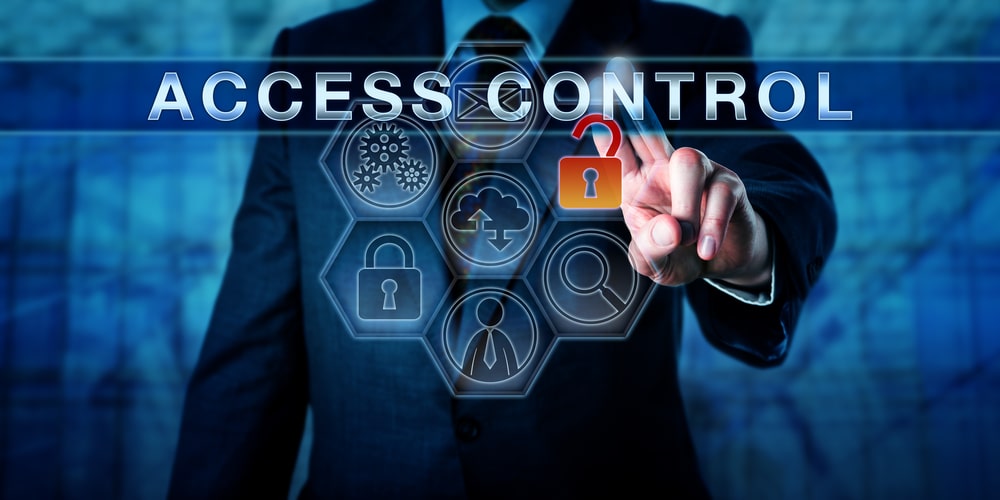Information Security Depends on Controlled Access
Access control is the basic concept of securing information through the regulation of access to files, records, folders, and entire categories of data for individual users or groups. The precise level of control company wide can be designed as a blanket structure or in a granular structure which fits the needs of specific security level groups and various departments. There is not one single correct way to implement information security and access control but there are a few wrong ways. Remember, the purpose of information security is to ensure restricted access to sensitive content, not to build a cumbersome system of categorization, filing, and sign-on requirements.
There are two orientations access control can be built from, and it should be built from both. The first is from a user standpoint. Every user must have a level of access commiserate with their responsibilities and duties in the company. The second is from an information standpoint. All data must have a classification mark dependent on the sensitivity degree of protected content. The only exceptions are for top level users with complete access and absolute public information with no restrictions; everything between these two extremes must have some limiting access controls enabled.
A Guide to Security Controls and Classification
Building security controls and classifications will safeguard data by creating independent marked groupings with control levels that protect against privacy violations and data leakage. For any information security system there should be the ability to create as many classifications as required at any level of complexity or, conversely, simplicity. This is what granular security control means; the ability to adjust security scope through a combination of access controls, control lists, security clearance levels, and security marks. With premium software systems the automatic redaction of sensitive information, data encryption, and certified authentication can increase granular levels of security without the need for additional company resources. Regardless of which system you choose to implement the security marks and classifications should be as granular as needed for the size and scope of your organization.
As already stated an important aspect of information security and access control is the avoidance of a complex and cumbersome system. Implementing a Single Sign-On (SSO) authentication system reduces the possible vulnerability areas because users only log in once, and with only one set of credentials. When login is reduced to one set of credentials, and especially when combined with multi-factor identification, enterprise security is improved. You can read more about SSO here: Single Sign-On as a User Access Standard – https://www.skytizens.com/why-single-sign-on-is-the-standard-for-user-access-to-multiple-applications/
Role-Based Access Control is Foundational
There are a few different types of access control and most organizations use more than one system. However, for most business use cases we suggest Role Based Access Control (RBAC) as the foundation control structure and Rule Based and/or Attribute Based controls as complimentary structures.
Foundation Access Control: RBAC is an access system that determines who can access a resource where multi-level security requirements exist. RBAC is controlled at the system level, outside of user control. Role Based Access Control regulates collections of permissions that could include complex operations or simply read or write functions and are assigned to users based on their role.
Compliment Access Control: Rule-based Access Control is based on conditions such as date, time, and location. It is a security model in which an administrator defines the rules that govern access to the resource. Any user has access if they meet the requirements of such conditions and therefore it is not well suited for highest level security.
Compliment Access Control: Attribute-based Access Control systems grant access rights based on claims needing to be satisfied by users such as age, security level, or knowledge qualifications. The user has to prove claims about their attributes to the access control engine. An attribute-based access control policy specifies which claims need to be satisfied to grant access to the resource. It is not necessary to authenticate or identify the user, just that the user has said attribute, so it is also not well suited for highest level security.
Advanced Access Control Characteristics
Advanced access control features should allow sweeping controls across specific user access areas without intricate administrative efforts. Administrative options must allow for multiple system access restriction areas all from a single, simplified graphical interface so dynamic permissions can easily be assigned. Control should be maintained over publicly shared documents while still allowing ease of access. Rule based accessibility that allows users to share data with others who don’t use the same Document Management System (DMS) can be made available for them to read or download to any other system or user within a specified time frame or within a specific department. This will save time and resources when working with all users, partners, clients and anyone else whom data must be shared.
These characteristics can be combined with Read-Only systems so your organization can stratify security access permissions one step beyond standard approval for the highest-level access control. It is a solution which balances the need for uniform data control against direct unencumbered access by giving users access to the organization’s system and data without the liability of alteration to functionality or content. I think you can see where we are going with this.
Every organization needs some level of information security, and a proper access control system is required for that security to work properly. Your organization is unique and will need a unique set of features, maybe some or maybe all of what has been mentioned. Whatever features are chosen they should provide you with the confidence that your organization’s information is available to the people who have the right to access, and to nobody else. Learn more about what Skytizens offers by contacting us directly.
Information Security
Looking for Information Security and Access Control solutions? Feel free to contact us for more details about our exclusive features and solutions suited for your organization.
